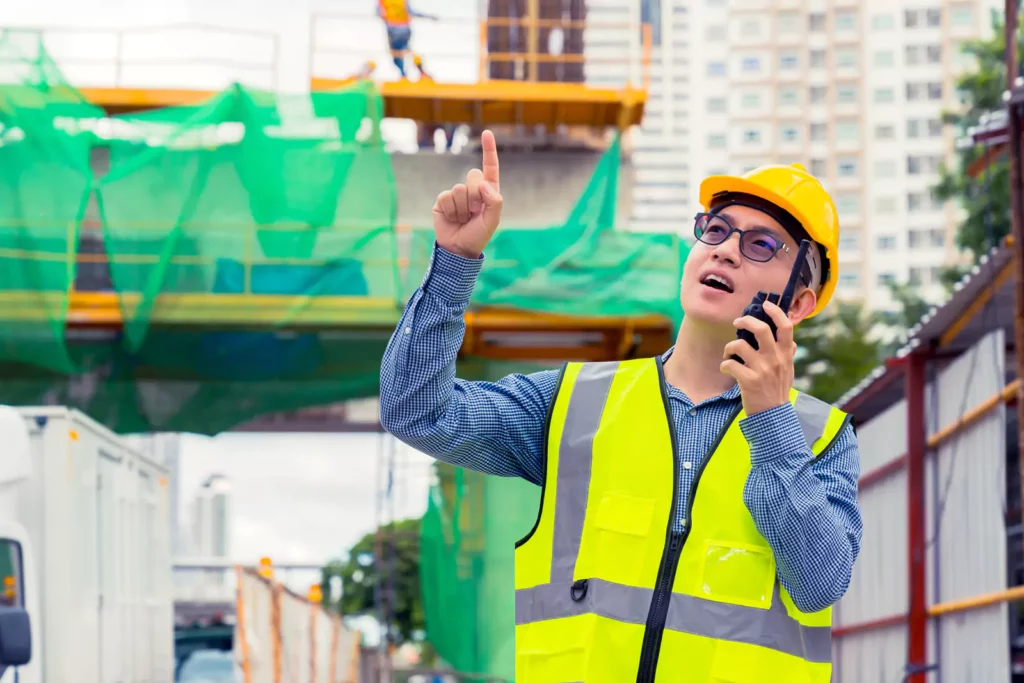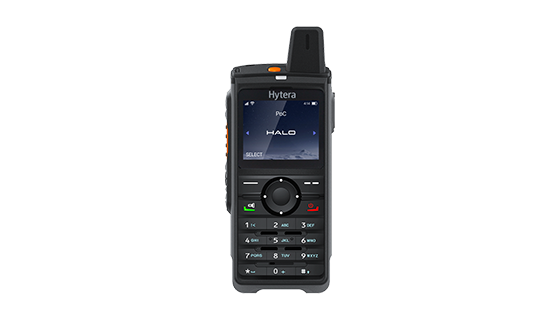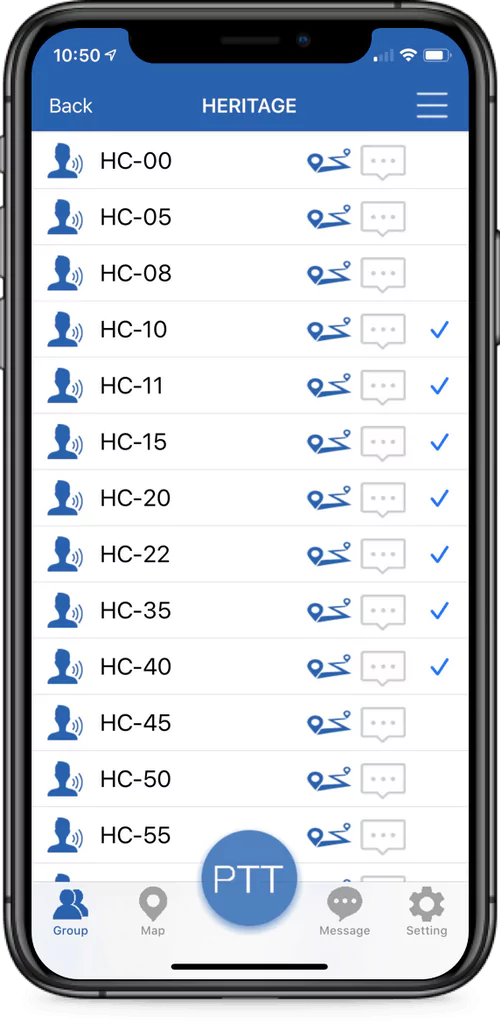Construction
FleetRadio is suited for the construction industry.

Challenges
Construction is one of the most dangerous industries, and construction worker injuries cost companies millions of dollars per year. Hytera radios provide features that help keep construction workers safe and on the job. Construction businesses demand high-quality and rugged communications equipment that stands up to weather and job site conditions. Hytera two-way radios are built for construction and packed with features that save time and money on the job site.

Our Reliable Solution
Whether you are a manager looking to communicate with your crew, or a worker running electrical systems in a new building, Fleet Radios has the Hytera two-way radios to help you solve problems, streamline operations, and save money. We provide radio solutions to construction contractors nationwide.
Get Your Team Up And Running Quickly
by deploying nationwide push-to-talk devices that are built for the job!

The Radio
The Hytera PNC380S PoC device is a compact, rugged, and easy-to-operate handheld device that utilizes Wi-Fi and existing nationwide 3G/4G/LTE cellular networks for unlimited coverage and capacity. The PNC380S is designed for reliable business communications with instant group calling in the vehicle and on the job site. It is built based on the AT&T certified module and can be quickly deployed without the significant infrastructure costs of traditional radio systems.
- Nationwide coverage with Wi-Fi and 3G/4G/LTE networks
- AT&T Network Approved Device
- Supports dispatching, group calling, and location tracking
- Voice, Video, and Text communications
- Compact and rugged devices that are easy to use
- Car Kit available for safe use in vehicles
In the construction industry, clear and dependable communication is essential to both success and safety. This isn’t easy when trying to coordinate a large mobile workforce of workers, tradespeople, subcontractors, and more.
Effective communication also isn’t easy, given the challenging conditions of the typical construction site. Workers are typically exposed to wet, muddy, dusty, hot, cold, icy, and windy conditions. This makes communication more difficult, and a construction site isn’t a great environment for mobile phones. The smartphone in your pocket might be great for sending emails and posting to social media, but it can lack the durability needed on a construction site.
Your communication device on a construction site must be able to handle drops, extreme temperatures, wet conditions, extreme heat, cold weather, and more.
Construction two-way radios are a great alternative to smartphones. Not only are they effective, but they’re also easy to use. Once they’re set up, all it takes is the push of a button to quickly communicate with your entire workforce. Also, construction radios are helpful because of what they are not: a distraction full of videos and other content typically found on a smartphone.
Professional radios are also built for a purpose, and many of them are made to meet military standards. If it’s good enough for The US military, then it’s probably good enough for your construction site. Construction radios don’t crack or break when they’re trapped. They can withstand harsh work environments and severe weather. These radios are also highly resistant to dirt and dust, making them more dependable than the amateur radios you likely grew up using.
Having a long battery life, construction two-way radios are also made to last during long work shifts. Many commercial-grade radios also have battery backups and charging capabilities that allow crews to stay connected for prolonged periods of time.
We tend to think of smartphones as the gold standard for communication, but many modern commercial-grade radios are programmable. These radios can be superior to smartphones in some situations because they have a number of key features:
- No network dead spots
- Connectivity during natural disasters and situations when cell towers become overloaded
- Cost savings compared to monthly usage fees
Construction radios also offer many of the same features as smartphones, such as emergency calling and the capacity to track the locations of people, deliveries, and supplies. At the very least, construction radios can provide a useful backup system for personal cell phones.
Enhancing On-Site Communication
Two-way construction radios are an effective way to keep an entire team connected, from project managers to frontline workers. They support an essential two-way flow of communication. Workers can check in with their supervisor to get assistance, while supervisors can keep their finger on the pulse of their crew. This helps to minimize errors and keep a team on schedule.
Strong on-site communication is also vital for worker safety. With massive equipment all over the place, power tools generating noise, and several things happening at the same time, the typical construction site is loud and dangerous. Construction radios are meant for these kinds of conditions. Many offer built-in noise-suppression features and some models automatically adjust the volume based on the surrounding noise level. This can allow your team to stay safe and productive amidst the chaos.
Modern radios also provide both one-to-one and group-wide communications. This allows teams to address different situations, from routine check-ins to life-threatening emergencies. With the press of a button, crew members can coordinate and share information. They can also have private chats or broadcasts to an entire group.
At their most basic, construction radios can provide fast communication. They allow workers to inform supervisors about complications or potential safety issues. For example, if a machine isn’t working properly, it could be both a productivity and safety issue that is quickly relayed over a radio. Another example is if someone spots a live wire, an entire crew can quickly be notified over the radio.
Construction Radio Models and Specifications
When it comes to models and specifications for construction two-way radios, there are just too many to count. A good first step to figuring out what you need is to consider a few key factors:
- Coverage. Are your construction sites typically several acres or just a single home? Are you often operating across multiple construction sites? If you only need limited coverage, then small license-free radios are a cheap and easy solution. However, large sites and multiple sites require greater coverage, and a 4G LTE solution is the best way to go in these situations.
- Durability. Most construction sites have difficult conditions. However, some sites are more extreme than others. The durability you need must be a major consideration when deciding on the model and specifications you need.
- Type of signal (UHF or VHF). Most construction situations call for UHF radios, which operate well around indoor and outdoor structures.
- Emergency functions. Construction radios are capable of emergency functions for “lone worker” and “man down” situations. When an emergency function is triggered, the radio enters an emergency state and contacts other radios on the network. Also, check all safety requirements to determine which emergency functions are mandatory for your construction business.
- Battery life. You need a radio that will have power throughout the entire shift. Most construction radios are designed to maintain power throughout an 8-hour shift. If you typically operate on an extended schedule, you probably need extended battery life or a system for replacing and recharging dead batteries.
If you’re looking for superior construction two-way radios to communicate with your crew, we recommend Hytera radios as the ideal radios for keeping your team safe and on track.
Hytera is a leading provider of professional radios for construction and other industries. The company offers a broad range of radios, and many of them have advanced features like voice recording and GPS location functions. These features make Hytera radios more than just push-to-talk communication devices. Top-of-the-line Hytera models can enhance communication and productivity in unprecedented ways while helping to keep construction workers safe.
Cellular Option: Good for communicating from one Job-Site to another. EX: Massive Infastructure project or more than 3 miles.
THe PNC-380S radio from Hytera is the company’s top-of-line device. It’s capable of providing nationwide coverage with superior audio quality through a 4G LTE connection. With a IP-67 rating, this radio is also built to last, with a high degree of durability and long battery life. The PNC380S model is capable of in-vehicle communications when used in conjunction with Hytera’s car kit. This radio supports group calling, dispatching, location tracking, video, and texting. We highly recommend this radio to users who want to invest in a high-quality communication solution that is built to last. The PNC-380S can also be quickly deployed without major radio investments in radio infrastructure, which can be necessary with other similar radios.
Digitial Option: Industry leading communications, For crucial on-site communication. If you aren’t looking for a higher-end model, Hytera also offers lower-end models that support local communication. The H-Series from Hytera uses AI-based voice enhancement to provide clear voice quality in loud environments. These radios are capable of extracting voice from background noises as loud as 30db. Combine any H-Series radio with the H-Series HR-652 Compact DMR Repeater for the best results.
Setting Up Your Construction Radio Network
When it comes to setting up your construction radio network, programming is a key step. When done correctly, programming unlocks all kinds of valuable features. For example, a single button on a construction radio could be programmed to provide dozens of different functions.
Construction radios can be programmed for our communication among certain groups or for specific channels. These radios can also be programmed to be a base radio or repeater that extends the operating range. Features like alerts, scan functionality, connecting to an outside speaker, and more can be configured through programming.
Some construction radio models require significant programming, while others only require a bit of setup. Lower-end models tend to come mostly preprogrammed, with end users only needing to program one or two basic items, such as setting the correct frequency. Higher-end models are designed to have much more flexibility and offer end users a significant amount of customization. In fact, higher-end models typically must be programmed before they can even send or receive calls.
It’s usually a good idea to have higher-end construction two-way radios programmed by a professional radio expert. Before you start setting up your construction radio network, you should ask the following questions:
- Which essential features do we need?
- How many channels?
- How many different departments will be using the radios?
- Do we need emergency functions?
- Is there a need for private or group calls?
- Does coverage need to be on- and off-site?
- What is our priority channel?
- What audio settings do we need?
- Do we need to transfer programming from our current radios?
- Do I need an FCC license?
Discuss Your Communication Needs with Our Experts Today
Add Fleet Radio, we offer a wide range of communications products, including construction radios. Our experts can assess your communications needs and recommend radios that suit your needs and budget. Contact us today to get the ball rolling on making your construction site safer and more efficient.
The App
Using the Fleet Radio app is a great way to keep a tab on your operations, with location tracking, easy private calling, group management, and even messaging.
Simply login, and get access to features other companies can’t come close to!
We are happy to offer our customers multiple ways to connect and provide tools to help make their jobs easier!

